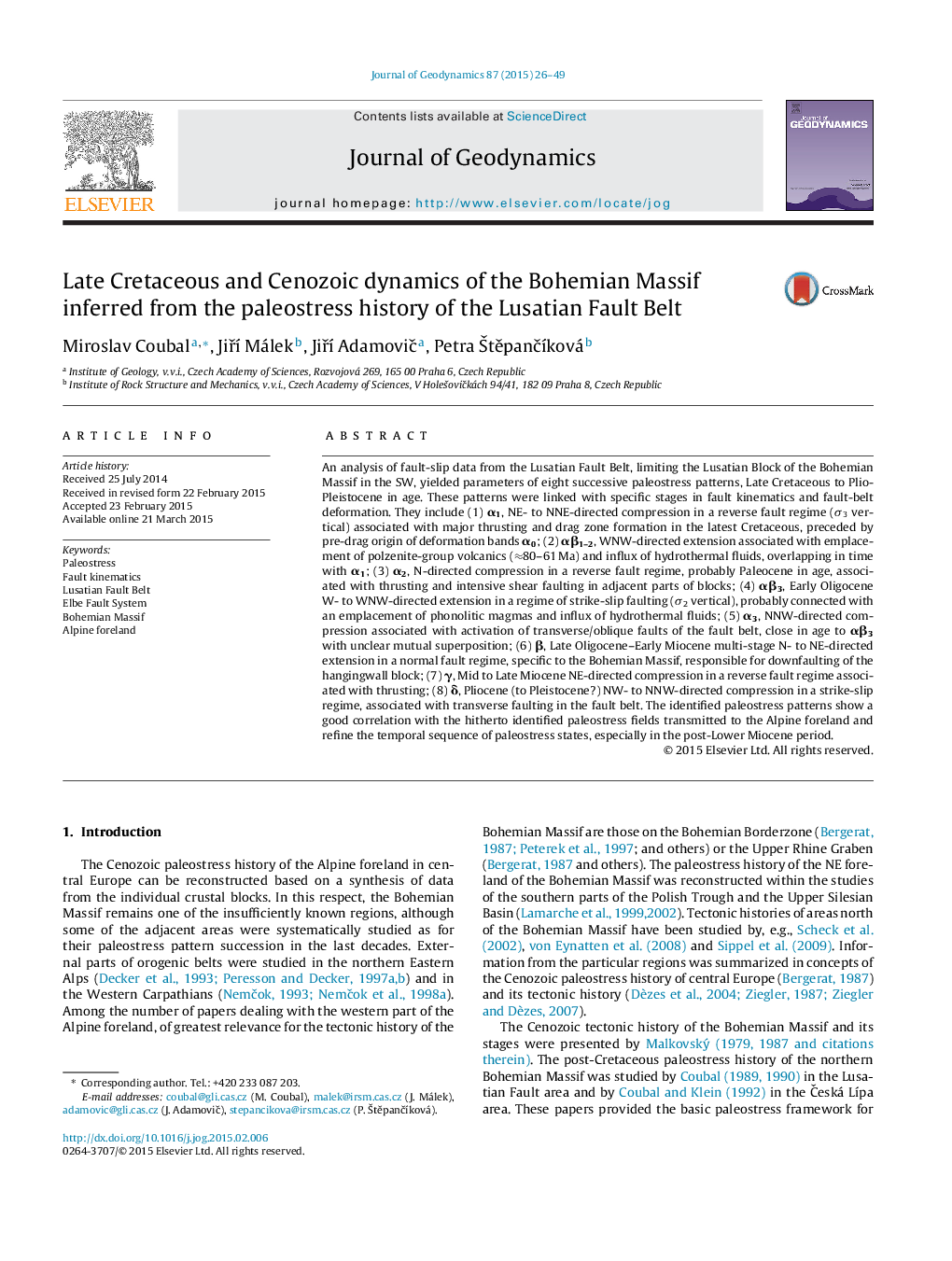| Article ID | Journal | Published Year | Pages | File Type |
|---|---|---|---|---|
| 4688028 | Journal of Geodynamics | 2015 | 24 Pages |
•We document 8 Late Cretaceous to Pliocene paleostress patterns around the Lusatian Fault.•We explain the kinematic effects of the paleostress patterns.•Identified patterns are correlated with paleostress fields in the Alpine foreland.•Paleostress patterns specific to the Bohemian Massif are characterized.
An analysis of fault-slip data from the Lusatian Fault Belt, limiting the Lusatian Block of the Bohemian Massif in the SW, yielded parameters of eight successive paleostress patterns, Late Cretaceous to Plio-Pleistocene in age. These patterns were linked with specific stages in fault kinematics and fault-belt deformation. They include (1) α1, NE- to NNE-directed compression in a reverse fault regime (σ3 vertical) associated with major thrusting and drag zone formation in the latest Cretaceous, preceded by pre-drag origin of deformation bands α0; (2) αβ1–2, WNW-directed extension associated with emplacement of polzenite-group volcanics (≈80–61 Ma) and influx of hydrothermal fluids, overlapping in time with α1; (3) α2, N-directed compression in a reverse fault regime, probably Paleocene in age, associated with thrusting and intensive shear faulting in adjacent parts of blocks; (4) αβ3, Early Oligocene W- to WNW-directed extension in a regime of strike-slip faulting (σ2 vertical), probably connected with an emplacement of phonolitic magmas and influx of hydrothermal fluids; (5) α3, NNW-directed compression associated with activation of transverse/oblique faults of the fault belt, close in age to αβ3 with unclear mutual superposition; (6) β, Late Oligocene–Early Miocene multi-stage N- to NE-directed extension in a normal fault regime, specific to the Bohemian Massif, responsible for downfaulting of the hangingwall block; (7) γ, Mid to Late Miocene NE-directed compression in a reverse fault regime associated with thrusting; (8) δ, Pliocene (to Pleistocene?) NW- to NNW-directed compression in a strike-slip regime, associated with transverse faulting in the fault belt. The identified paleostress patterns show a good correlation with the hitherto identified paleostress fields transmitted to the Alpine foreland and refine the temporal sequence of paleostress states, especially in the post-Lower Miocene period.
